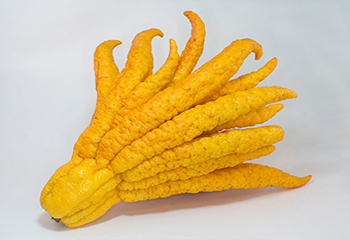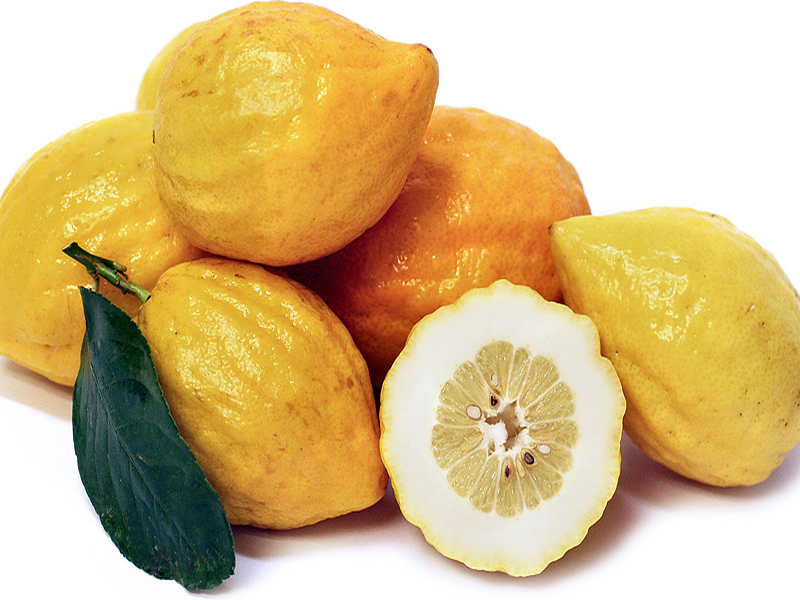In order to fulfil the mitzvah of waving the lulav during the holiday of Sukkot, we actually need four species: branches of the willow (aravot), myrtle (hadasim) and date palm trees (lulav) and, of course, an etrog.
There are many interpretations about the significance of these four components, and similarities have been drawn between the characteristics of certain species and those of the Jewish People. But without sounding too heretical (and with no disrespect to the other three), can’t we just admit that the etrog is the star of the bunch? Today, an eclectic look at the etrog, “the fruit of the goodly tree.” (Leviticus 23:40)
Etrog seeds have been found in Mesopotamian excavations dating back 6,000 years. The armies of Alexander the Great are thought to have carried etrogim to the Mediterranean region about 300 BCE It was the first citrus fruit to arrive in Palestine and was the only citrus fruit for 1,000 years, only to later be joined by the lemon and sour orange.
Some clever archeological sleuthing suggests that etrogim may have been cultivated in the Jerusalem region in the second century BCE. Researchers suspected the site of an ancient Israelite palace and gardens might contain ancient etrog pollen. But how do you find pollen thousands of years later? The archeologists examined an early plaster wall and speculated that if plasterers had been working on the walls during the spring, some pollen may have been trapped in the plaster. After careful examination, they found pollen from several species, including the etrog, which they speculate was brought there from India via Persia.
Known botanically as citrus medica, it has been used as a remedy for seasickness, muscular pain and skin disease. In India, the peel is eaten to overcome bad breath. And in Panama, citron leaves are ground up and combined with other ingredients and given as an antidote for poison.
Harvesting Etrogim

When shopping, do not come home with this fruit. Known as “Buddha’s hand,” this close relative of the etrog has fruity “fingers” which open up. Popular in China and Japan, it is very fragrant and used to lend a pleasant odor to rooms and clothing. Striking in appearance, it is NOT recommended for pairing with your lulav.
READ: HOW TO CELEBRATE SUKKOT, THE GREEN WAY
If you’re in the market for a (kosher) etrog, you should definitely know what qualities to look for. You wouldn’t want to end up with a lemon. And then you’ll want to protect your investment so that it lasts the entire holiday. Esrogworld advises keeping “the etrog in the box. The etrog will form slight brown discolourations if handled too much with one’s bare hands.” That does not affect it being fit for use.
When it comes to etrogim, size doesn’t really matter. But don’t tell this family who have posted a video on YouTube of their monster-sized citron, which weighed in at a healthy seven pounds.
This is no optical illusion
How to assemble and shake your lulav, etrog, myrtle and willow
Observant Jewish travellers may carry four plants – a palm branch, myrtle twigs, willow twigs, and a citron – in airports and through security checkpoints. These plants are religious articles and may be carried either separately or as a bundle. Jewish travellers may be observed in prayer, shaking the bundle of plants in six directions… TSA’s screening procedures do not prohibit the carrying of such agricultural items through the airport or security checkpoints, or on airplanes.
So far so good. But, you’re not homefree yet. Here’s the scrutiny to expect for your prized etrog: Travellers will be asked to open the container with the ethrog [sic] and unwrap it. The agriculture specialist will inspect the ethrog. If either insect stings or pests are found, the ethrog will be prohibited from entering the United States. If neither is found, the traveller will be allowed to rewrap and re-box the ethrog for entry into the United States.
Wherever you – and your etrog – may be spending Sukkot, have a Chag Samayach!
